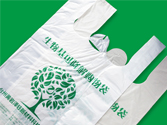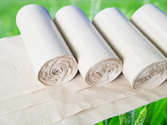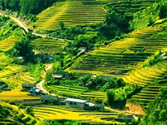The earliest time once plastic products is considered to be the greatest invention in the 20th century, it is not only light, the price is low, with excellent performance, widely used in all walks of life, also brought a lot of convenience to our life, in our country are also put forward to plastic instead of steel, plastic and wood, and then we use made of plastic raw material products, bring us convenience, at the same time, also has brought certain problems to our environment, because of the difficulty of recycling, and in the process of recycling, also can produce secondary pollution, these have now become a world problem.
According to the field of plastic is used currently mainly can be divided into: industrial, agricultural, daily, four aspects for medical use, incomplete statistics, the environmental pollution of plastic raw materials made of products mainly concentrated in the field of agricultural use, daily plastic products, plastic products used in this field characteristics embodied in: use crowd, regional distribution is wide, plastic products category, confused with high frequency, such as disposable plastic products is given priority to, also brought difficult to "limit, management and recycling" problem.
In addition, the rapid development of express delivery industry and the use of disposable express parcels have also brought strong growth in demand for the plastics industry. From 2010 to 2016, China's express delivery business grew at a compound rate of 54%. It is expected that the number of parcels will exceed 70 billion by 2020, and double by 2022. The market space is still huge. However, the increasing use of bags and tapes and the increasingly serious pollution caused by the non-standard management are more challenges.
Thirdly, agricultural mulch has the function of increasing temperature, preserving moisture and increasing yield in agricultural production. In recent years, with the popularization and application of rural greenhouses and mulch planting technologies, greenhouses and mulch crops have been very common in rural areas, and farmers have benefited from them. Due to insufficient publicity and weak awareness of environmental protection, some farmers have insufficient understanding of the harmfulness of agricultural film residues in soil. In addition, it takes a lot of manpower and material resources to recover agricultural film in the field. As a result, a large number of waste film remains in the field, resulting in "white pollution" of farmland. China's agricultural film industry usage is expected to be around 2.75 million tons in 2017.
Plastic products because of its lightweight, cheap characteristics gradually replaced the traditional materials, such as traditional wood, steel, bag from alternative point of view, if will turn paper leather bags and other plastic packaging bags, from the perspective of resources is not very good to achieve the purpose of saving resources, environmental protection, because of increased use of paper, means that the need to cut down more trees, forest vegetation destruction, and the papermaking process may cause the problem such as water pollution, air pollution, so based on the perspective of effective protection of the environment, instead of a batch of train of thought, we suggest investing more experience and material research and development production of biodegradable plastics, and to promote the use.
Taking mulch as an example, some experiments have shown that if the residues of tomato and pepper exceed 30kg in an acre of land that has been used for 5 years without timely collection of discarded film, the yield of tomato and pepper can be reduced by 34% and 25% respectively. Some waste plastics can contaminate water supplies after they are washed into rivers. The biggest harm to soil from agricultural mulch remains is that, after several years, the soil will clump, causing the soil to lose its ability to support. In view of this, in recent years, China's biodegradable film is also constantly trying.
Complete biodegradable plastics are mainly made from natural polymers (such as starch, cellulose, chitin) or agricultural by-products through microbial fermentation or synthesis of biodegradable polymers, such as thermoplastic starch plastics, aliphatic polyester, polylactic acid, starch/polyvinyl alcohol, etc. According to the research, compared with the ordinary polyethylene mulch, the biodegradable mulch can increase the yield per mu of crops by about 10%, and the soil pollution is basically zero. After a 90-day cycle, the mulch all degrades in the soil. Although the advantages of biodegradable film are obvious, the development of biodegradable film is slow due to the factors such as the difficulty of production technology, high raw material cost and limited terminal acceptance ability.
However, in the research process of the global plasticizer network in 2017, it was learned that an acre of garlic usually needs about 40 yuan of ordinary mulch, and the cost of using biodegradable mulch is about three times that of ordinary mulch, which is about 120 yuan. But the 10% gain is far greater than the higher costs. The average per-mu yield of garlic is 2,000 jin, an increase of 10%, which means an increase of 200 jin. According to the wholesale price of 2 yuan for one jin of garlic, the income increases by at least 400 yuan. Without government support in the promotion of new things, so the government and relevant departments should actively encourage enterprises to research, development and promotion of biodegradation and photolysis membranes, such as new type of agricultural film, and can reduce costs in the breakthrough technology, offer certain policy support, as well as to the farmers the importance of its widespread use biodegradable film and cost-effective, as soon as possible the large-scale and industrialized production of biodegradable plastics.
Article source: medium plastic vision







